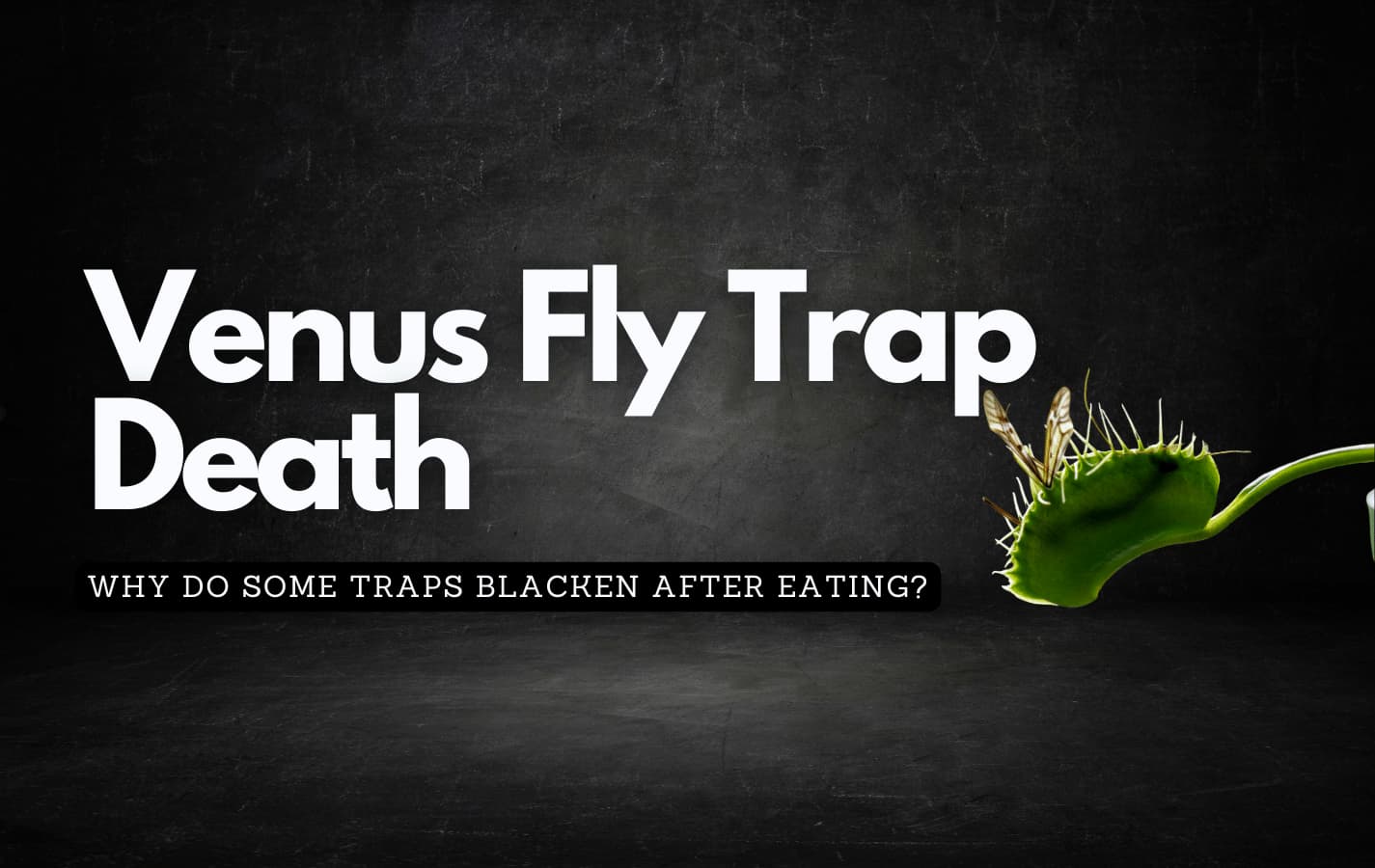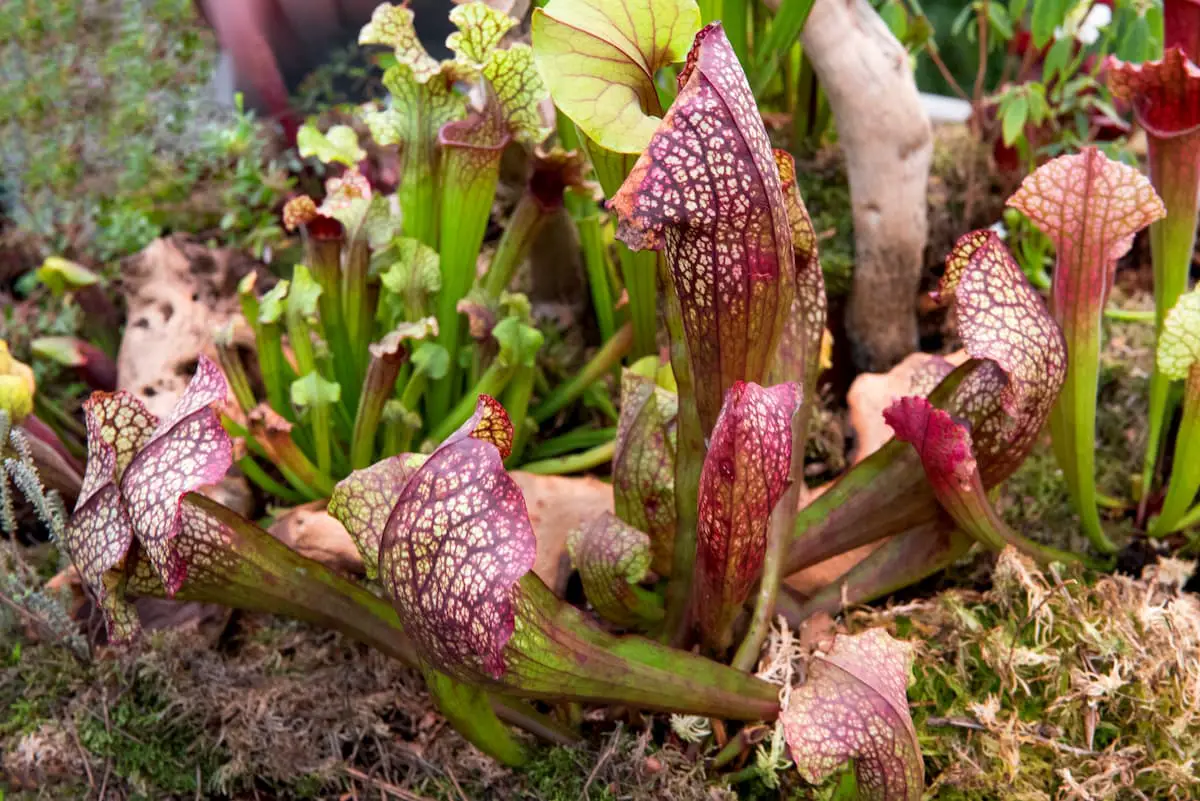Have you ever witnessed your Venus flytrap turn black after a meal, leaving you wondering if it’s dying or diseased?
It’s a common phenomenon that many Venus flytrap owners experience. But don’t fret – this is actually a natural process that happens when the plant has finished digesting its prey.
Venus flytraps are carnivorous plants that have adapted to thrive in nutrient-poor soils by catching and consuming insects. When a Venus flytrap closes its leaves around an insect, it secretes digestive enzymes to break down the prey and extract the nutrients.
As digestion completes, the leaves will turn black and die off, leaving only new growth behind.
This article will explore in detail why Venus flytraps turn black after eating and what you can do to ensure your plant stays healthy.
Understanding The Digestion Process Of Venus Flytraps
Venus flytraps are carnivorous plants that capture and digest insects as their primary source of nutrients. To understand why they turn black after eating, it is important to understand these fascinating plants’ digestion process.
Venus flytrap anatomy plays a crucial role in capturing prey. The plant’s leaves are modified into traps that contain trigger hairs, which, when stimulated by an insect, cause the trap to snap shut within seconds.
Once closed, the prey cannot escape due to the inward-facing spikes on the trap’s inner surface.
Prey selection is also an important aspect of Venus flytrap digestion. The plant is selective in what it eats, with a preference for insects rich in nitrogen, such as ants and beetles.
This selectivity helps ensure that the plant receives the necessary nutrients for survival.
The Role Of Enzymes In Breaking Down Prey
Enzymes are produced by the Venus Fly Trap to help break down its prey. Once the prey is eaten, the enzymes go to work, breaking down the proteins and fats in the prey.
Enzyme activity is important for digestion, as it helps the Venus Fly Trap extract nutrients from the prey.
Without enzymes, the Venus Fly Trap would not be able to absorb the prey, which is why it often turns black after eating.
Enzyme Production
Have you ever wondered why your Venus Fly Trap plant turns black after eating its prey? It’s all thanks to the amazing power of enzyme production.
Enzymes are proteins that play a crucial role in breaking down prey in the digestive system of carnivorous plants such as the Venus Fly Trap. Without these enzymes, the plant would not be able to extract nutrients from its prey and grow.
One of the main functions of enzymes is to break down large molecules into smaller ones that the plant can absorb. In the case of Venus Fly Traps, enzymes are responsible for breaking down proteins, carbohydrates, and lipids found in insects.
This process is known as prey digestion and it allows the plant to obtain essential nutrients such as nitrogen and phosphorus which are not readily available in their natural habitat.
Enzyme production is a complex process that involves several steps including gene expression, synthesis, and regulation.
The plant must produce enough enzymes to digest its prey efficiently but also needs to control their activity to avoid damaging its own tissues.
By understanding how enzymes function in Venus Fly Traps, we can gain insights into how other carnivorous plants have evolved to survive in nutrient-poor environments without relying on photosynthesis alone.
Enzyme Activity
Now that we understand the importance of enzyme production in breaking down prey, let’s delve deeper into the concept of enzyme activity.
Enzyme activity refers to the rate at which enzymes catalyze chemical reactions within the digestive system of Venus Fly Traps.
Enzyme activity is affected by various factors such as temperature, pH levels, and substrate concentration.
For example, if the temperature is too high or too low, it can denature enzymes and render them useless.
Similarly, if the pH levels are not optimal for a particular enzyme function, it can also affect its activity. Optimal enzyme activity is vital for efficient prey digestion in Venus Fly Traps.
The plant must regulate its enzyme activity to ensure that it does not overproduce or underproduce enzymes.
Overproduction can lead to tissue damage while underproduction can result in incomplete digestion and inadequate nutrient absorption.
In conclusion, understanding enzyme function and activity is crucial in comprehending how Venus Fly Traps break down their prey.
By studying these processes, scientists can gain insights into how carnivorous plants have evolved to survive in harsh environments where nutrients are scarce.
The Significance Of Black Leaves After Eating
After prey is captured, enzymes in the Venus flytrap’s digestive fluids break down the insect’s proteins and other nutrients into smaller molecules that the plant can absorb.
While this process is necessary for the flytrap’s survival, it can have a visible impact on the plant’s leaves. Many owners of Venus flytraps report that their plants turn black after eating.
Possible causes of black leaves after eating include damage to the traps during feeding, bacterial or fungal infections, and excessive exposure to sunlight.
To prevent these issues, it’s important to feed your Venus flytrap only small insects that will fit comfortably inside its traps. Additionally, avoid touching or otherwise damaging the traps while they are open.
If you notice blackening of your Venus flytrap’s leaves after feeding, there are several prevention strategies you can try.
First, make sure your plant is getting enough water and humidity – this will help prevent bacterial and fungal infections from taking hold. You may also want to consider moving your plant to a location with less direct sunlight or providing some shade during the hottest parts of the day.
As a responsible Venus flytrap owner, it’s important to take steps to maintain your plant’s health and ensure its longevity.
In addition to following best practices for feeding and preventing leaf blackening, you should regularly prune any dead or dying leaves from your plant and keep an eye out for signs of pests or disease.
With proper care and attention, your Venus flytrap can thrive for years to come!
Tips For Maintaining A Healthy Venus Flytrap
Proper watering is essential to maintaining a healthy Venus flytrap. These plants require a specific type of soil that is always moist but not soggy.
It’s important to avoid using tap water because it contains minerals that can harm the plant. Instead, use distilled or rainwater to keep your Venus flytrap hydrated.
The type of soil you use is also crucial for the health of your Venus flytrap. It should be an acidic, well-draining soil mix that contains no fertilizer or compost.
You can purchase pre-made mixes specifically designed for Venus flytraps or create your own by mixing peat moss and perlite in equal parts.
Following these tips can maintain a healthy and happy Venus flytrap.
Remember only to feed it insects occasionally and avoid overfeeding. And if you notice any blackening after feeding, don’t worry – this is a natural process as the trap digests its prey.
Just make sure to continue proper watering and soil care to ensure the continued health of your plant.
Frequently Asked Questions
What Other Plants Can Be Grown Alongside Venus Flytraps In A Terrarium?
Looking for some Terrarium Companions to grow alongside your Venus Flytrap? There are plenty of options out there!
When choosing Flytrap Habitat companions, it’s important to remember that they should be plants that enjoy similar growing conditions.
Some great options include pitcher plants, sundews, and butterworts. These carnivorous plants are visually stunning and thrive in the same moist, acidic soil as Venus Flytraps.
Another option could be mosses or ferns which can add a touch of greenery to your terrarium while also helping to regulate humidity levels.
With a little research and planning, you can create a lush and diverse mini-ecosystem within your terrarium with your Venus Flytrap as the star attraction.
Can Venus Flytraps Eat Anything Other Than Insects?
Venus flytraps are carnivorous plants that primarily feed on insects.
However, contrary to popular belief, they can survive without consuming any insects at all.
In fact, some growers have reported success in transitioning their Venus flytraps to a plant-based diet by providing them with nutrient-rich soil and fertilizers.
While it may not be their natural diet, Venus flytraps can still derive nutritional value from plant-based food sources.
It’s important to note that this type of diet may require additional care and attention to ensure the plant is receiving enough nutrients to thrive.
What Is The Lifespan Of A Venus Flytrap?
It’s said that time flies when you’re having fun, but unfortunately for Venus flytraps, their lifespan is relatively short-lived.
The Venus Flytrap lifespan can range from a few years to up to 20 years with proper care tips.
However, overfeeding these carnivorous plants can cause the dangers of bloating and ultimately lead to their demise.
It’s important to remember that although they are fascinating creatures, they still require a delicate balance of nutrients and sunlight to thrive.
So while it may be tempting to feed your Venus Flytrap everything in sight, it’s best to stick to a moderate feeding regimen and enjoy their unique beauty for as long as possible.
Can Venus Flytraps Be Grown Outdoors?
Yes, Venus Flytraps can be grown outdoors with the right care tips.
Outdoor cultivation requires placing the plant in full sun or partial shade and using a well-draining soil mix.
Additionally, it’s important to keep the soil moist but not waterlogged and to only use distilled or rainwater.
Avoid using tap water as it contains minerals that can harm the plant.
Remember to provide adequate nutrition by feeding your Venus Flytrap insects around once a week during growing season.
With these proper care techniques, your Venus Flytrap should thrive in an outdoor environment.
How Often Should I Feed My Venus Flytrap?
When it comes to feeding frequency for Venus Flytraps, less is more. These carnivorous plants have very specific nutritional requirements and can easily become overfed, leading to blackening of the leaves.
It’s recommended to only feed them once every two to three weeks with small insects like fruit flies or gnats. Overfeeding can also cause the traps to stop functioning properly, so it’s important to stick to a strict feeding schedule.
Remember, Venus Flytraps are native to nutrient-poor environments and have adapted to survive on infrequent meals.
Conclusion
In conclusion, Venus Flytraps are fascinating plants that have captured the imagination of people for centuries. They are a popular choice for terrariums as they require very little care and can coexist with other low-maintenance plants such as mosses and ferns. However, it is important to remember that Venus Flytraps have a limited lifespan and should be treated with care.
While Venus Flytraps are known for their carnivorous diet, they can only eat insects. This means that if you want to keep your Venus Flytrap healthy, you will need to provide it with a steady supply of insects.
Finally, if you decide to grow your Venus Flytrap outdoors, make sure you choose a location that receives plenty of sunlight and has well-draining soil. With these tips in mind, you can enjoy the unique beauty of these amazing plants for years to come.




Leave a Reply